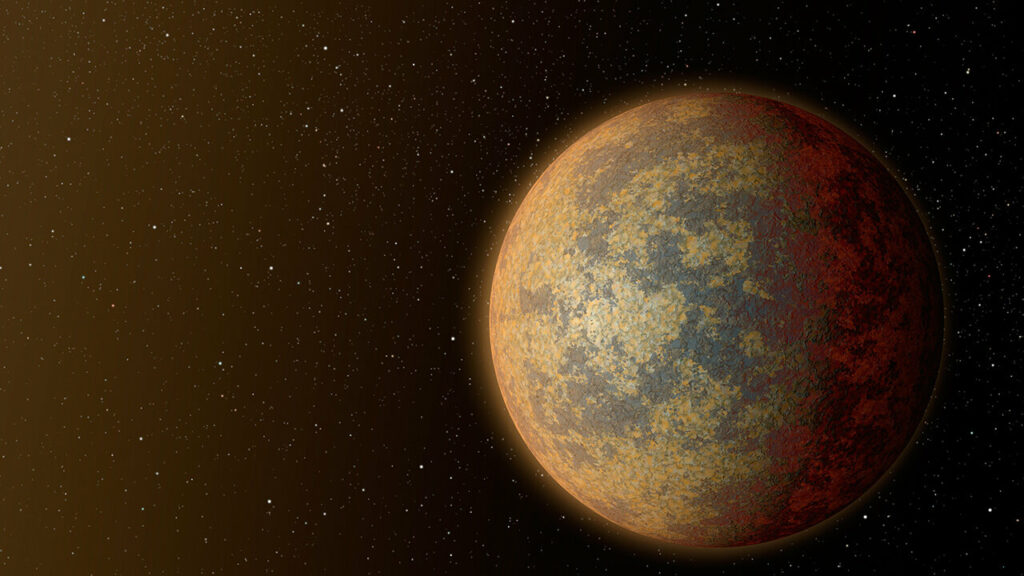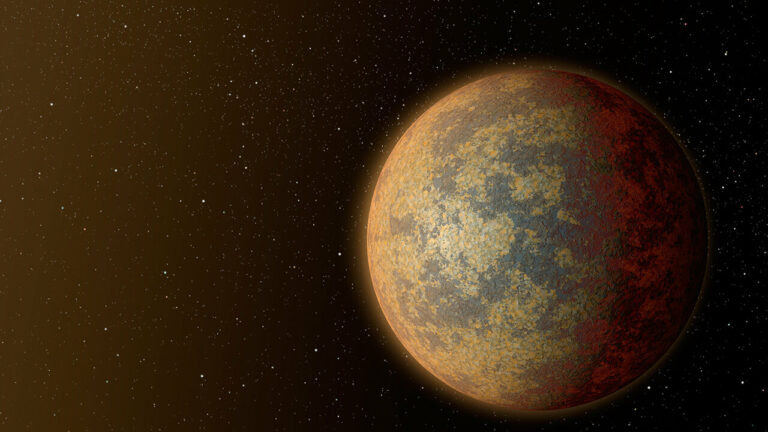Study Reveals Gliese 367 b as a Atmosphere-Free, Sweltering Sub-Earth
Astronomers have recently conducted a study on Gliese 367 b, a sub-Earth exoplanet located nearby. Utilizing the James Webb Space Telescope (JWST), they have made significant discoveries about this alien world. The findings, which were published on the pre-print server arXiv on January 2, reveal that Gliese 367 b is characterized by its darkness, high temperature, and the absence of a detectable atmosphere.

Gliese 367 b, also known as GJ 367 b or Tahay, was initially detected in December 2021 by NASA’s Transiting Exoplanet Survey Satellite (TESS). It revolves around Gliese 367, an M-dwarf star of spectral type M1.0V, situated approximately 31 light years away. This star is nearly half the size and mass of our sun. Additionally, the Gliese 367 system is home to at least two other planets, which are located farther away from the central star.
Previous observations of Gliese 367 b have revealed that it is approximately 30% smaller than Earth and possesses a mass equivalent to about 0.67 times that of our planet. The exoplanet maintains an equilibrium temperature of 1,367 K and completes an orbit around its parent star every 7.7 hours.
To gain further insights into the nature and properties of Gliese 367 b, a team of astronomers led by Michael Zhang from the University of Chicago employed JWST’s Mid-Infrared Instrument (MIRI) to analyze its atmosphere. The observations conducted over a period of 12.7 hours, equivalent to 1.6 planetary orbits, provided valuable information about this exoplanet.
In their research paper, the scientists stated, “Using the Mid-Infrared Instrument on JWST, we monitored GJ 367 b for 12.7 h, corresponding to 1.6 planetary orbits.”
The observations unveiled that Gliese 367 b lacks a detectable atmosphere, exhibits no heat redistribution, and possesses a dark surface within the MIRI bandpass, characterized by a blackbody emission spectrum. The dayside temperature of Gliese 367 b was determined to be 1,728 K, while its nightside temperature was estimated to be below 847 K.
According to the paper, the results dismiss the possibility of Gliese 367 b having a carbon dioxide atmosphere with a pressure exceeding 1 bar. It also rules out the presence of an outgassed atmosphere with a pressure greater than 10
The data collected indicates that Gliese 367 b is likely to have a predominantly molten dayside. Consequently, any volatile substances present in the planet’s silicate mantle would be distributed into the atmosphere. This led the authors of the study to conclude that Gliese 367 b is unlikely to possess an atmosphere, unless its overall composition is devoid of any volatile materials.
Additionally, based on the findings, the researchers speculate that the absence of an atmosphere in Gliese 367 b suggests that the planet contains significantly fewer volatile substances compared to Earth as a whole. They propose that this lack of atmosphere may be attributed to the removal of initial volatile materials through intense stellar radiation.
This article is republished from PhysORG under a Creative Commons license. Read the original article.
Do not forget to share your opinion with us to provide you with the best posts !





0 Comments